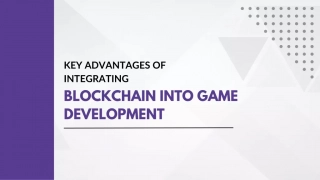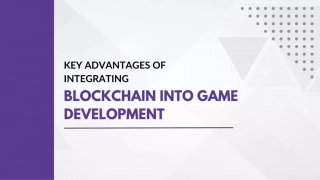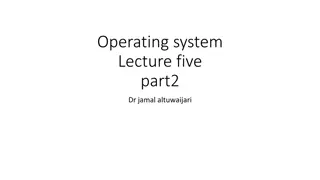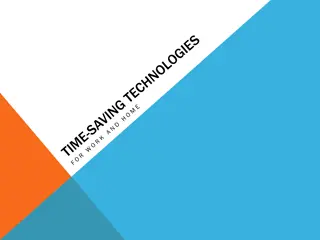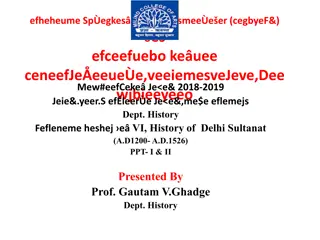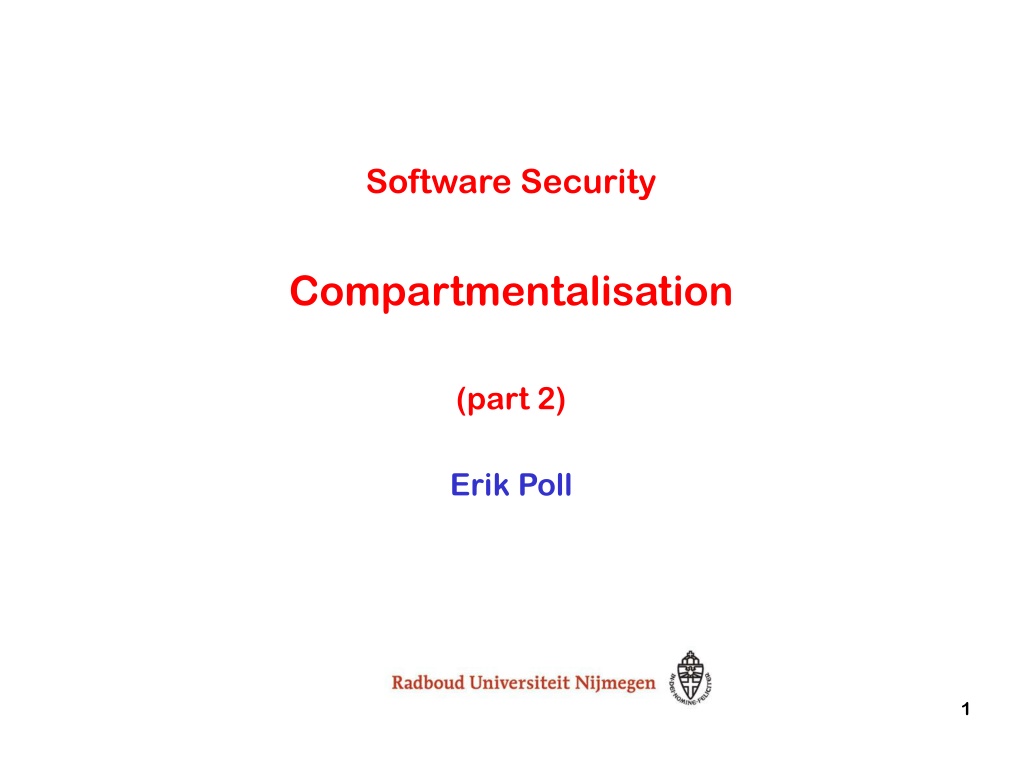
Java Security Measures and Compartmentalization Explained
Explore the world of Java security through compartmentalization, access control, and sandboxing techniques. Learn about language-level protection, code-based access control in Java, and safety measures for Java and other languages.
Download Presentation

Please find below an Image/Link to download the presentation.
The content on the website is provided AS IS for your information and personal use only. It may not be sold, licensed, or shared on other websites without obtaining consent from the author. If you encounter any issues during the download, it is possible that the publisher has removed the file from their server.
You are allowed to download the files provided on this website for personal or commercial use, subject to the condition that they are used lawfully. All files are the property of their respective owners.
The content on the website is provided AS IS for your information and personal use only. It may not be sold, licensed, or shared on other websites without obtaining consent from the author.
E N D
Presentation Transcript
Software Security Compartmentalisation (part 2) Erik Poll 1
In-process Compartmentalisation process A ? process B trusted trusted module A module A ? untrusted untrusted module B module B ? ? Operating System Hardware (CPU, memory, I/O peripherals) 2
One way to do in-process compartmentalisation: Language-level access control Chapter 4 of the lecture notes 3
Language-level sandboxing on top of OS sandboxing process A process B trusted trusted module A module A untrusted untrusted module B module B Execution engine (eg Java or . NET VM) Operating System Hardware (CPU, memory, I/O peripherals) 4
Code-based access control in Java Example configuration file that expresses a policy grant codebase "http://www.cs.ru.nl/ds", signedBy "Radboud", { permission java.io.FilePermission "/home/ds/erik","read"; }; protection domains grant codebase "file:/.*" { permission java.io.FilePermission "/home/ds/erik","write"; } 5
Java safety & security guarantees memory safety strong typing visibility restrictions (public, private, ) immutable fields using final unextendable classes using final immutable objects, eg String, Boolean, Integer, URL code-based access control aka sandboxing based on stackwalking This allows security guarantees to be made even if part of the code is untrusted or simply buggy Similar guarantees for Microsoft .NET/C#, Scala, 6
Components of the Java Runtime package B package A Java Runtime Environment (JRE) incl. Virtual Machine (VM) Security Manager Class Loader APIs VM hardware (CPU + peripherals) 7
TCB for Javas code-based access control Byte Code Verifier (BCV) typechecks the byte code Virtual Machine (VM) executes the byte code (with some type-checking at run time) SecurityManager does the runtime access control by stack walking ClassLoader downloads additional code, invoking BCV & updating policies for the SecurityManager 8
The security failure of Java (1) Nice ideas, but Java has resulted in many security worries. Some contributing / root causes of the security problems: Large TCB with large & complex attack surface, growing over time Many classes in the core Java API are in the TCB and can be accessed by malicious code Security-critical components (eg . ClassLoader and SecurityManager) are implemented in Java & runs on the same VM Apart from logical flaws, there are risks of these components accidentally exposing a field as protected or sharing a reference to mutable object with untrusted code Java s reflection mechanism makes all this much more complex The possibility to download code over the internet is a dangerous capability, even if it is protected & controlled Messy update mechanism 9
The security failure of Java (2) Different kind of problem with Java s nice sandboxing possibilities: People do not use it December 2021 a security vulnerability in open-source Log4J logging API was revealed, which affected many systems. Compartmentalisation of logging functionality is natural & obvious, does the logging functionality need network access? but clearly nobody does it. Dutch NCSC did useful work when Log4J flaw hit, eg https://github.com/NCSC-NL/log4shell US Cyber Safety Review Board (CSRB) wrote up good report on Log4J 10
Log4J attack 11 Cas van Cooten, @chvancooten, https://twitter.com/chvancooten/status/1469340927923826691
Another way to do in-process compartmentalisation: Hardware-based sandboxing - also for unsafe languages 12
Sandboxing in unsafe languages Unsafe languages cannot provide sandboxing at language level An application written in an unsafe language could still use OS sandboxing by splitting the code across different processes (as e.g. browsers use) An alternative approach: use sandboxing support provided by underlying hardware, to impose memory access restrictions inside a process 13
Example: security-sensitive code in large program secret.c static int tries_left = 3; static int PIN = 1234; static int secret = 666; int get_secret (int pin_guess) { if (tries_left > 0) { if ( PIN == pin_guess) { tries_left = 3; return secret; } else { tries_left--; return 0 ;} } } main.c Bugs or malicious code anywhere in the program could access the high-security data # include secret.h // other modules void main () { } 14 Example from [N. van Ginkel et al, Towards Safe Enclaves, HotSpot 2016]
Isolating security-sensitive code with secure enclaves secret.c static int tries_left = 3; static int PIN = 1234; static int secret = 666; int get_secret (int pin_guess) { if (tries_left > 0) { if ( PIN == pin_guess) { tries_left = 3; return secret; } else { tries_left--; return 0 ;} } } Enclave main.c # include secret.h // other modules void main () { } 15
Isolating security-sensitive code with secure enclaves secret.c static int tries_left = 3; static int PIN = 1234; static int secret = 666; int get_secret (int pin_guess) { if (tries_left > 0) { if ( PIN == pin_guess) { tries_left = 3; return secret; } else { tries_left--; return 0 ;} } } Enclave main.c # include secret.h // other modules void main () { } untrusted code cannot access sensitive data 16
Isolating security-sensitive code with secure enclaves secret.c static int tries_left = 3; static int PIN = 1234; static int secret = 666; int get_secret (int pin_guess) { if (tries_left > 0) { if ( PIN == pin_guess) { tries_left = 3; return secret; } else { tries_left--; return 0 ;} } } Enclave main.c # include secret.h // other modules void main () { } Only allowed entry point (for get_secret) Untrusted code should not be able to jump to the middle of get_secret code (recall return-to- libc & ROP attacks) 17
Secure enclaves Enclaves isolates part of the code together with its data Code outside the enclave cannot access the enclave's data Code outside the enclave can only jump to valid entry points for code inside the enclave Less flexible than stack walking: Code in the enclave cannot inspect the stack as the basis for security decisions Not such a rich collection of permissions, and programmer cannot define his own permissions More secure, because OS & Java VM (Virtual Machine) are not in the TCB Also some protection against physical attacks is possible But are physical attacks really in our attacker model? DRM is typically the reason to include user in the attacker model? 18
Enclaves using Intel SGX Intel SGX provides hardware support for enclaves protecting confidentiality & integrity of enclave s code & data providing a form of Trusted Execution Enviroment (TEE) This not only protects the enclave from the rest of the program, but also from the underlying Operating System! Hence example use cases include Running your code on cloud service you don t fully trust: cloud provider cannot read your data or reverse-engineer your code DRM (Digital Rights Management): decrypting video content on user s device without user getting access to keys Some concerns about Intel s business model & level of control: will only code signed by Intel be allowed to run in enclaves? 19
The security failure of SGX And other secure enclave technologies? Growing list of micro-architectural side-channel attacks Specre, Meltdown, and their variants that are proving hard to eridate them Maybe information leakage between execution threads running on the same hardware is inevitable? SGX was depreciated for Intel 11 in 2021, but development continues for Intel processors for cloud & enterprise usage 20
Execution-aware memory protection A more light-weight approach to get secure enclaves access control based on the value of the program counter, so that some memory region can only be accessed by a specific part of the program code This provides similar encapsulation boundary inside a process as SGX Eg. crypto keys can be made only accessible from the module with the encryption code The possible impact of an buffer overflow attack is the rest of the code is then reduced [Google, US patent 9395993 B2, 2016] [Koeberl et al., TrustLite: A security architecture for tiny embedded devices, European Conference on Computer Systems. ACM, 2014]
Spot the defect! secret.c Repeated calls will cause integer underflow of tries_left, given attacker infinite number of tries static int tries_left = 3; static int PIN = 1234; static int secret = 666; int get_secret (int pin_guess) { if (tries_left > 0) && ( PIN == pin_guess) { tries_left = 3; return secret; } else { tries_left--; return 0 ;} } Moral of the story (this bug): You can still screw things up You have to be very careful writing security-sensitive enclave code But: Screwing up anywhere else in the program can not leak the PIN main.c # include secret.h // other modules void main () { } 22
Different attacker models for software malicious input 1. I/O attacker application observable output 2. Malicious code attacker inside the application application malicious component Java sandbox & SGX protect against this 3. Platform level attacker inside the platform, under the application application SGX also protects against this platform In all cases, the application itself still has to ensure it exposes only the right functionality, correctly & securely (eg. with input validation in place) 23
Recap: different forms of compartmentalisation access control of applications and between applications Conventional OS acccess control Language-level sandboxing in safe languages eg Java sandboxing using stackwalking Java VM & OS in the TCB access control within an application Hardware-supported enclaves in unsafe languages eg Intel SGX enclaves underlying OS possibly not in the TCB 24
Recap Language-based sandboxing is a way to do access control within a application: different access right for different parts of code This reduces the TCB for some functionality This may allows us to limit code review to small part of the code This allows us to run code from many sources on the same VM and don t trust all of them equally Hardware-based sandboxing can also achieve this also for unsafe programming languages Much smaller TCB: OS and VM are no longer in the TCB But less expressive & less flexible No stackwalking or rich set of permissions 25



